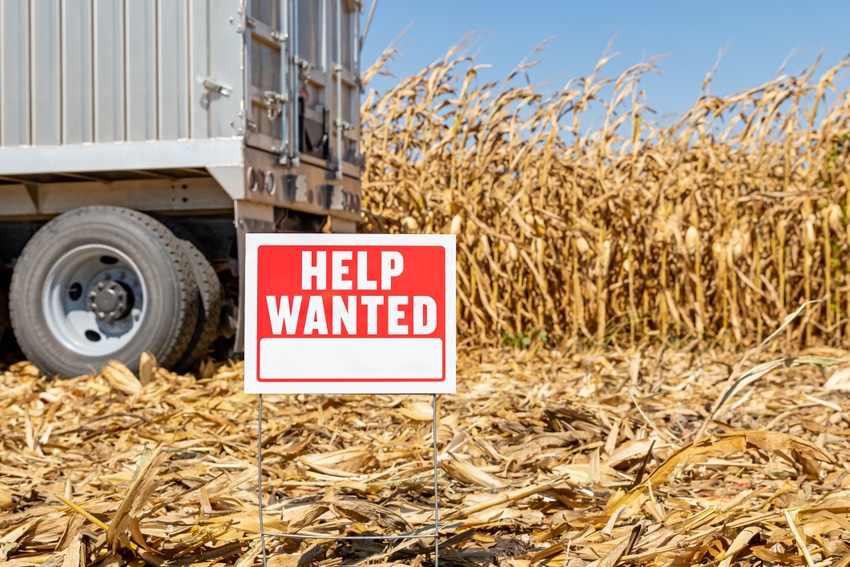When analyzing labor allocations in breed-to-wean pig farms, for example, we typically see a range of 17 minutes to 27 minutes per pig produced.
October 12, 2022

Steve Meyer, Partners for Production Agriculture, said in a conference a couple of weeks ago there are two jobs for every worker today in the United States. It is an employee marketplace. Every industry is struggling to find enough people to fill open roles, not just agriculture.
Restaurants have shorter hours, often dining rooms are closed before the drive-thrus. Hospitals are impacted by shortages especially when it comes to elective surgeries. Construction companies are booked for 12 months or more. The list can go on and on.
The problem isn't just that "people don't want to work" but there is truly a shortage of people to fill the roles. An article titled, "The Baby Boomer Generation," says that 10,000 boomers are hitting retirement age each day from now until 2030. That is 3.65 million people a year that could be retiring. According to Census.gov, there are less than 425,000 people that will turn 22 years of age between now and 2030. That leaves a deficit of 3.2 million people in the job market each year.
The opportunity for young entrepreneurs to get into farming is at an all-time high. The average age of a principal operator is 59.4 and only 9% of the current producers (all of agriculture) are age 35 or under according to AgAmerica Lending. The 9% will shepherd the technological transformation of agriculture.
To catch a glimpse of agricultures' future we only have to look around and study the non-agricultural landscape. Elon Musk on Oct. 6 announced the production of the Tesla semi-truck built for autonomous cargo delivery. Q Bio led by Jeff Kaditz developed digital twin human monitoring that he hopes will lead to a new way of prioritizing care based on models generated by big data. Prescriptive health care would direct patients and doctors to connect at exactly the right time.
Labor shortages, food demand and production variation are the fuel for innovation. Discoll's, a farm in California that produces strawberries has begun the development of a robotic harvester with precision picking of berries at the exact profile of development. This technology has a direct effect on the human hours needed for harvest.
When analyzing labor allocations in breed-to-wean pig farms, for example, we typically see a range of 17 minutes to 27 minutes per pig produced. At $20/hour, this translates to a delta of $3.46/pig. Diagnosing the opportunity starts with the profile of time by department. In a traditional breed-to-wean we have seen the following breakdown.
In our research on task time allocation, a 56-crate room takes approximately eight human hours to wash. In the case of capturing 80% of those hours through efficiency gains through robotic pressure washing, you reduce minutes/pig by .68 which can equal $.22/pig. On a productive 10,000 sow unit this is a potential savings of 2,700 hours or 1.25 full-time equivalent.
Software solutions can be even more ambiguous to determine value. Before the value is even considered there is a need for three foundational pillars to engage a successful technology. The new era of digital transformation looks at Software as a Strategic Advantage.
Capable and trusted teams both in technology and pig production. Teams that will partner and immerse themselves to understand value opportunities or margin erosion in the system.
A respect for essential technology – The company needs to bring a framework that is respectful of previous technology investments while providing unique insight with the aggregation of the current and future technologies.
Actionable insight – information is not enough. Data is just noise if behavior isn't changed for the caretaker. That behavior change must drive continuous improvement to drive profitability through decision-ready information that changes behavior.
The 9% of 35-year-olds and younger in agriculture will provide unique opportunities to have a global impact on farming and food. What a great time to be in agriculture no matter what age!
Summit SmartFarms is devoted to creating irresistible places to work in agriculture by simplifying the complex by equipping people to optimize performance through technology. If you would like to learn more about how Summit SmartFarms can help your organization, you can email Jon Hoek.
Source: Jon Hoek, who is solely responsible for the information provided, and wholly owns the information. Informa Business Media and all its subsidiaries are not responsible for any of the content contained in this information asset.
You May Also Like



